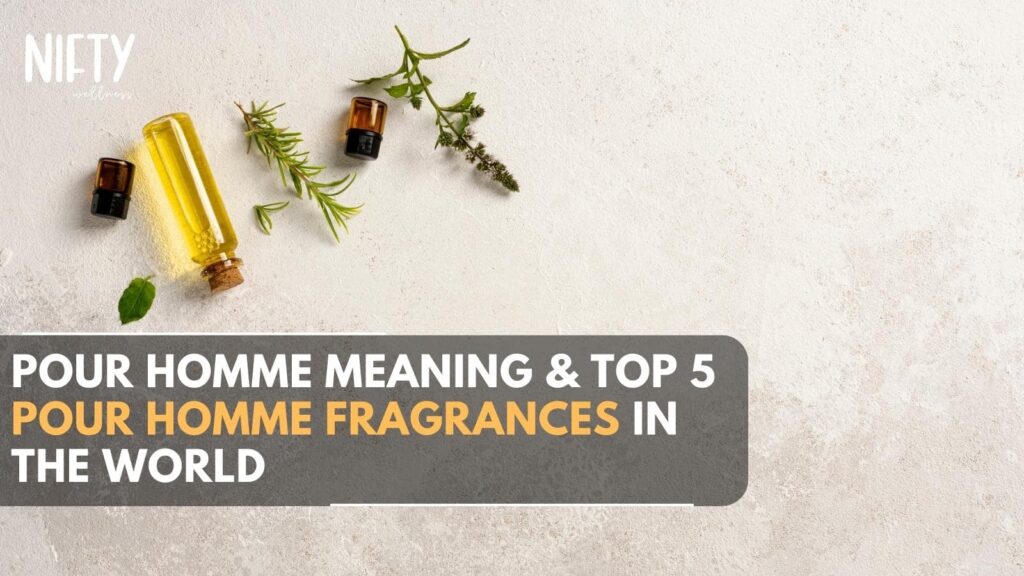“Pour Homme,” you might have come across this intriguing French phrase while shopping for fragrances or browsing through cologne options. It has an air of sophistication and mystique that adds an element of allure to the world of scents. But what exactly does Pour Homme mean? In this journey of unraveling the essence behind this enigmatic phrase, we will not only decode the literal translation with Pour Homme meaning in English, but also explore its significance in the realm of fragrances, particularly in the context of eau de toilette, eau de parfum, and eau de cologne. Let’s embark on this aromatic expedition to understand what is Pour Homme.
Pour Homme Meaning: A Literal Translation
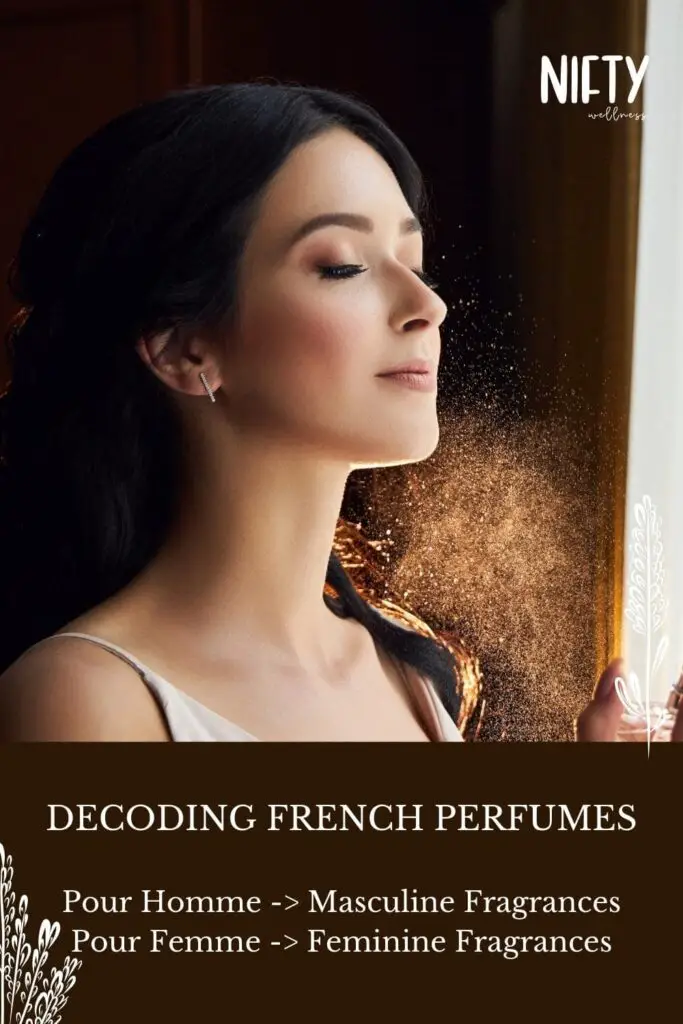
At its core, Pour Homme translates to “For Men” in English. It’s a straightforward phrase with an elegant French touch. So, whenever you see a fragrance labelled Pour Homme, it’s essentially designed and marketed for the masculine audience. The allure of French, often considered the language of love and luxury, adds a touch of sophistication to men’s fragrances.
Now, let’s delve deeper into the various fragrance categories and understand the nuances of Eau de Toilette, Eau de Parfum, and Eau de Cologne, as they are closely associated with Pour Homme fragrances.
Decoding Eau de Toilette and Eau de Parfum
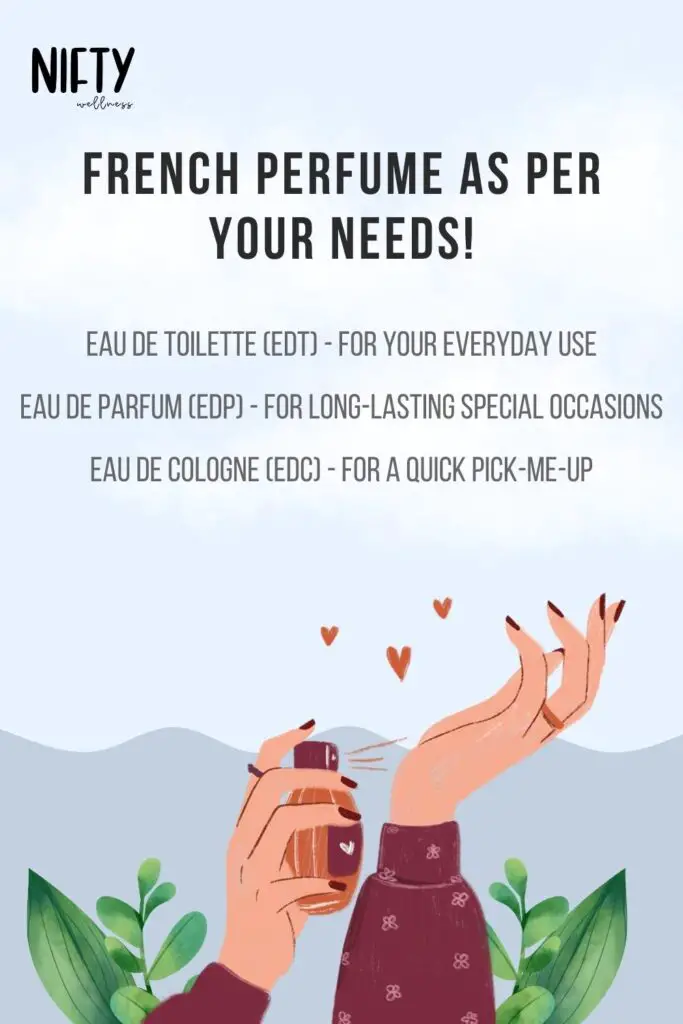
In perfumery, there are several concentration levels of fragrances, ranging from the most subtle to the most potent. Two of the most common types are eau de toilette (EDT) and eau de parfum (EDP). These labels signify the percentage of fragrance oils present in the product and, thus, their lasting power.
Eau de Toilette (EDT)
This is a lighter concentration with approximately 5-15% fragrance oils. Want to know Eau de Toilette meaning? Pour Homme fragrances labelled as eau de toilette are ideal for everyday use, offering a subtle, fresh scent. It’s perfect for those who prefer a fragrance that isn’t overpowering but still lingers throughout the day.
Eau de Parfum (EDP)
For those who wish to know Eau De Parfum meaning, here’s the deal: With a higher concentration of fragrance oils, typically around 15-20%, Eau de Parfum variants labelled Pour Homme are known for their long-lasting and intense scents. These are perfect for special occasions when you want your fragrance to make a statement and last well into the night.
The use of Pour Homme in both these categories signifies that these fragrances are crafted specifically for men, considering the unique chemistry of men’s skin and their scent preferences. These fragrances often showcase woody, musky, or spicy notes, reflecting the traditional elements of masculinity.
Check out our latest blog Obagi Blender vs Clear: Choosing the Right Skincare Product. Discover the difference between Obagi Blender and Clear in our detailed comparison.
What is Pour Femme?
Now that you know what is Pour Homme, do you want to know Pour Femme meaning? In the world of perfumery, fragrances often transcend the realms of mere scents to encapsulate a profound essence. Much like its counterpart, Pour Homme, the French phrase Pour Femme weaves a fragrant symphony that’s uniquely tailored to celebrate the multifaceted nature of femininity. Translating to “For Women,” Pour Femme is more than just a label; it’s an exquisite invitation to explore a world of scents designed to complement and enhance the grace and allure of women.
Eau de Cologne & Pour Homme
Eau de cologne (EDC) is another term often encountered in the world of fragrances. This type of fragrance contains a lower concentration of fragrance oils, typically around 2-4%. It’s known for its refreshing and invigorating qualities, making it an excellent choice for a quick pick-me-up during the day.
Although eau de cologne meaning does not explicitly label Pour Homme, it is essential to acknowledge that fragrances, in general, have evolved significantly. In the past, colognes were often considered unisex, and many classic colognes are still popular among men. With changing trends, gender-neutral scents have become more common.
In the modern world of perfumery, gender lines are increasingly blurred, and many individuals, regardless of gender, opt for fragrances based on personal preferences rather than traditional gender norms. The choice of a fragrance depends on what resonates with an individual’s style and personality.
The Versatility of Pour Homme Fragrances
The beauty of Pour Homme fragrances lies in their versatility. While they are designed with men in mind, they can be appreciated by anyone who is drawn to the specific scent notes and characteristics they offer. In fact, the evolution of fragrances has given rise to a plethora of options that defy traditional gender norms. The world of perfumery is now a playground for self-expression, allowing individuals to select scents that resonate with them personally, irrespective of their gender.
Top 5 Pour Homme Fragrances in the World
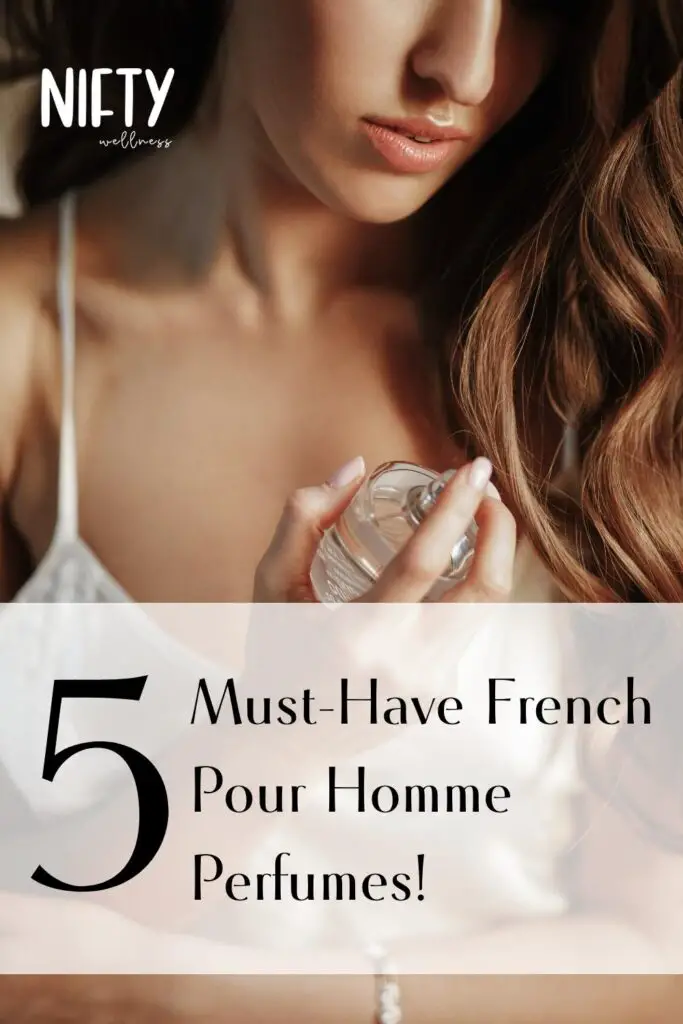
Here is a list of the top 5 Pour Homme fragrances that have left an indelible mark on the world of perfumery:
Dior Sauvage Pour Homme
Dior Sauvage is celebrated for its rugged and sophisticated scent, blending fresh top notes with warm, woody undertones. It’s a timeless classic that embodies modern masculinity.
Chanel Bleu de Chanel
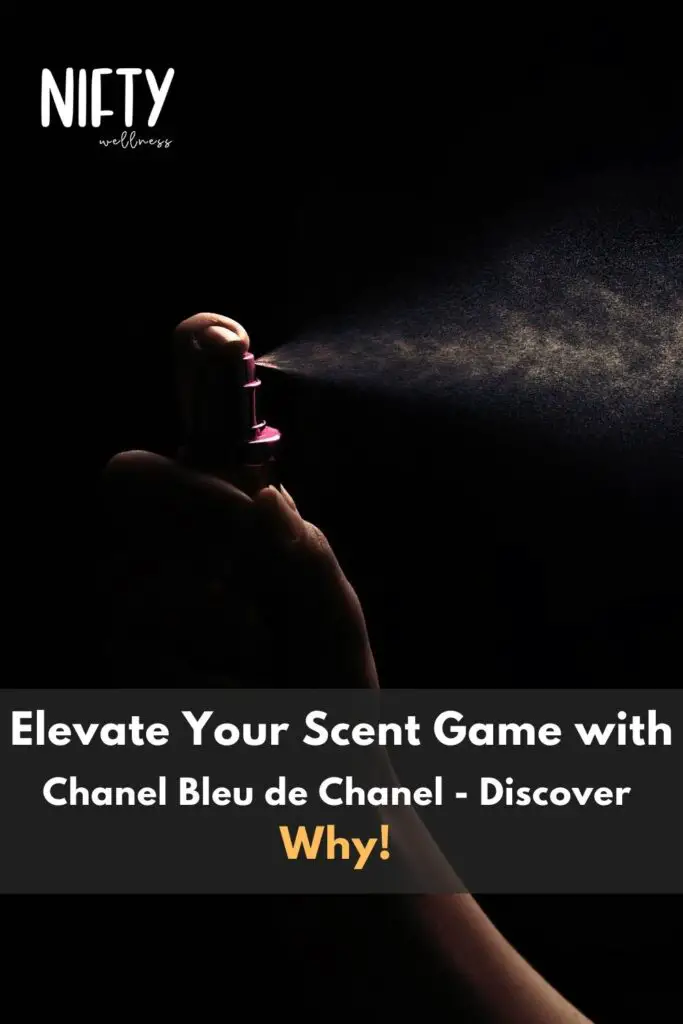
Chanel Bleu de Chanel – the iconic fragrance is known for its crisp and clean scent, which balances citrus notes with aromatic and woody accords. It’s an embodiment of elegance and refinement.
Acqua di Giò Pour Homme by Giorgio Armani
With its refreshing blend of marine and citrus notes, Acqua di Giò captures the essence of the Mediterranean. It’s a fragrance that exudes freshness and vitality.
Tom Ford Noir Pour Homme
Tom Ford Noir Pour Homme combines oriental and woody notes to create a captivating and mysterious scent. It’s the epitome of sophistication and allure.
Bvlgari Man in Black
A truly unique fragrance, Bvlgari Man in Black features exotic spices, leather, and rum notes. It’s a daring and intense scent that makes a bold statement.
These Pour Homme fragrances have earned their place as some of the finest in the world, each offering a distinct olfactory experience that resonates with a diverse range of tastes and personalities.
Read our new blog Kiehl’s vs Drunk Elephant: Unveiling the Best Skincare Brand for Your Needs. Uncover the distinct features, ingredients, and results to aid you in making an educated decision and achieve your desired skin glow.
The final word!
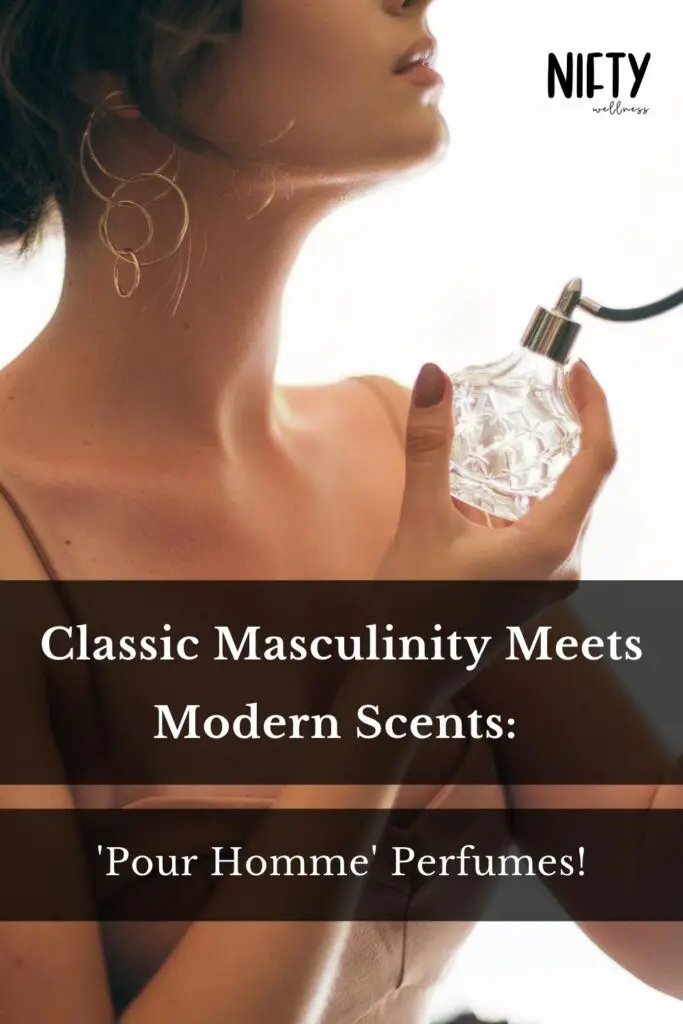
In the world of fragrances, Pour Homme signifies elegance, masculinity, and a touch of French allure. It’s a phrase that opens the door to a wide array of scent options designed for men but appreciated by all who are captivated by the art of perfumery. The rich tapestry of fragrances encompasses Eau de Toilette, Eau de Parfum, and Eau de Cologne, offering choices that suit every occasion and style.
Moreover, the modern era of perfumery has transcended the boundaries of gender, emphasizing personal preferences over traditional norms. Pour Homme fragrances remain a beloved choice for many, reflecting the essence of classic masculinity while embracing the evolving landscape of scent exploration.
In conclusion, Pour Homme is more than just a label; it’s an invitation to explore the world of fragrances and discover scents that resonate with your unique identity. Now that you know what does pour homme mean, when you come across a bottle adorned with this elegant French phrase, know that it holds the promise of a captivating olfactory journey—a journey that transcends gender and celebrates the art of scent. After all, in the words of Mahatma Gandhi, “If not now, then when? If not me, then who?” – and this, my friends, is the time to embark on a fragrant adventure of self-expression.
Frequently Asked Questions (FAQs)
Can women use “Pour Homme” products?
Yes, women can use “Pour Homme” products. While these products are often marketed for men, no strict rule says women can’t enjoy them too. Fragrance preference is a personal choice, so if a woman likes the scent of a “Pour Homme” product, she can definitely use it. It’s all about what makes her feel good and confident.
What are some famous “Pour Homme” fragrances?
Several famous “Pour Homme” fragrances have become iconic over the years. Some popular options include Dior’s “Eau Sauvage Pour Homme,” Chanel’s “Antaeus Pour Homme,” and Gucci’s “Guilty Pour Homme.” These scents are renowned for their unique and captivating blends, making them classics in men’s fragrances. Other well-loved choices include Bleu de Chanel Pour Homme and Terre d’Hermès Pour Homme, each offering distinct character and charm.
How can I choose the right “Pour Homme” fragrance?

Choosing the right “Pour Homme” fragrance involves considering personal preferences and several key factors:
Scent Notes: Determine whether you prefer fresh, woody, spicy, or citrusy notes.
Occasion: Select scents suitable for everyday wear, special occasions, or specific seasons.
Longevity: Decide if you want a long-lasting Eau de Parfum or a lighter Eau de Toilette.
Skin Type: Fragrances can smell different on various skin types; test them on your skin.
Brand and Reviews: Explore reputable brands and read reviews for insights.
Sampling: Try samples before committing to a full bottle.
Who popularized Pour Homme fragrances?
Pour Homme fragrances gained popularity thanks to several influential fashion and perfume houses. Chanel was among the early pioneers, introducing “Pour Monsieur” in 1955, a landmark men’s fragrance. Other prestigious brands such as Dior, Gucci, and Armani joined the trend, creating unique Pour Homme scents. Over the years, these fragrances have become a prominent category, with each brand adding its distinctive touch, continuing to attract a wide audience.
Is Pour Homme a timeless style?
Yes, Pour Homme is considered a timeless style in the world of fragrances. These scents are classic and enduring, as they have been cherished for decades without losing their appeal. Pour Homme fragrances often incorporate traditional elements, making them suitable for various occasions and age groups. This timeless quality makes them a reliable choice for those who appreciate elegance and sophistication in their personal style.
